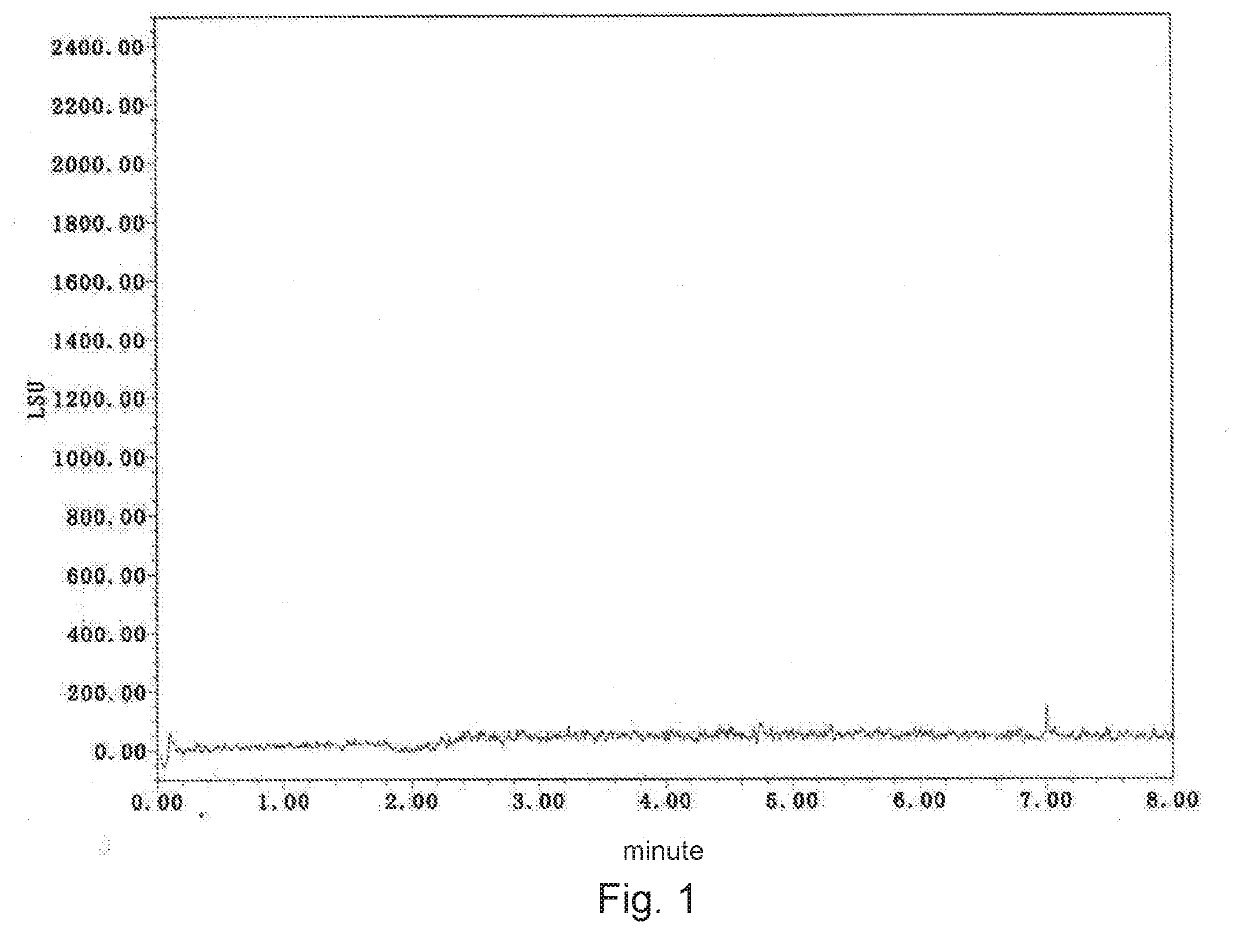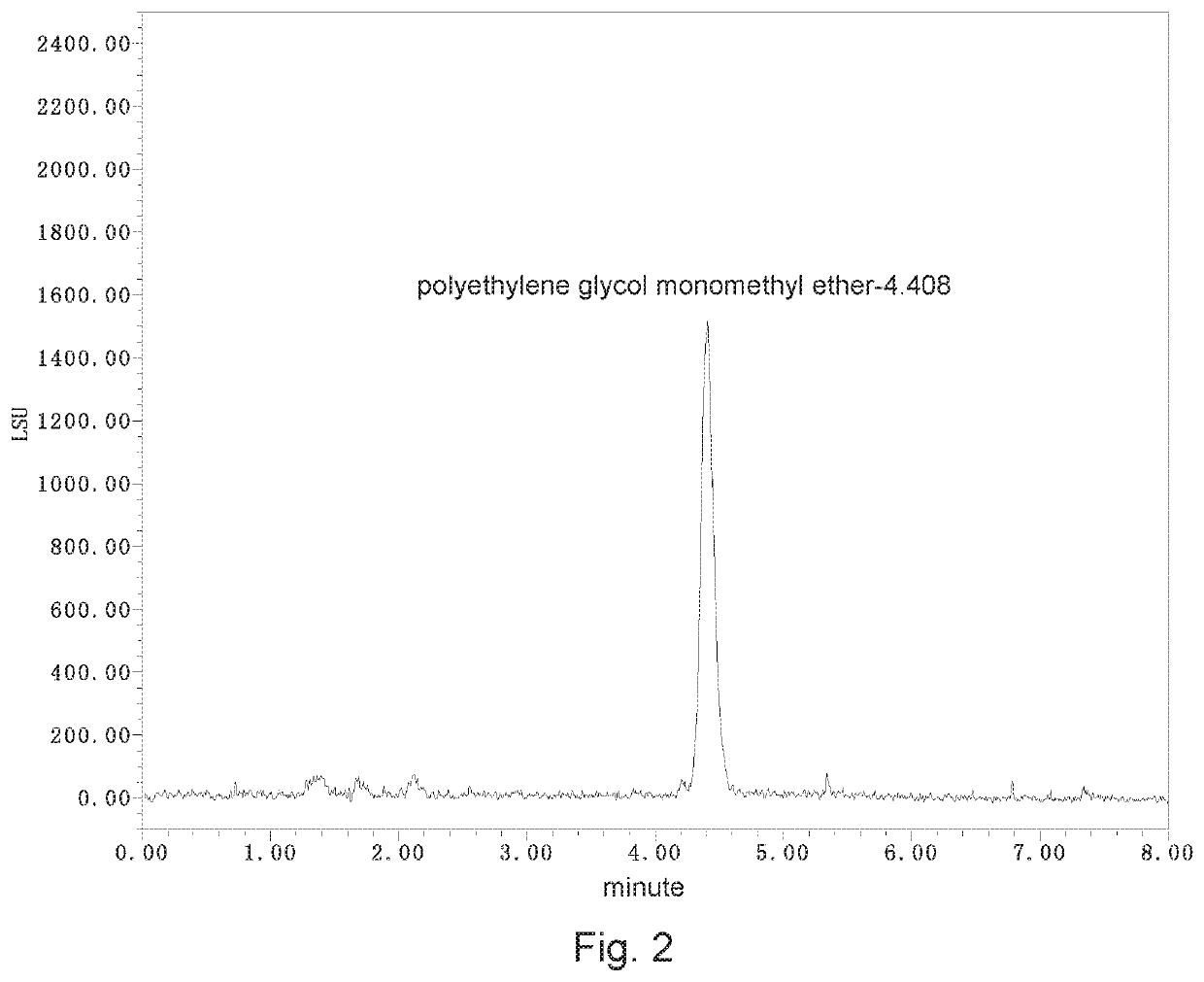Detection method of polyethylene glycol monomethyl ether residue in medicinal materials
- Summary
- Abstract
- Description
- Claims
- Application Information
AI Technical Summary
Benefits of technology
Problems solved by technology
Method used
Image
Examples
Embodiment Construction
[0038]The following is merely a preferred embodiment of the present invention, and are not intended to be limiting in any way. For those skilled in the art, the present invention may have various modifications and changes. Any modification, equivalent replacement, and improvement made within the spirit and principle of the present invention shall be included in the protection scope thereof.
[0039]A detection method of polyethylene glycol monomethyl ether residue in medicinal materials comprises steps as follows.
[0040]I. Chromatographic conditions:
[0041]1. Chromatographic column: liquid chromatography column (4.6 mm×250 mm, 5 μm) with high-purity silica gel matrix as filler;
[0042]2. Detector: waters2424 evaporative light scattering detector, instrument to parameters: gain: 100, drift tube temperature: 100° C., physicochemical gas (air) pressure: 40.0 psi;
[0043]3. Mobile phase:
[0044]Mobile phase A: 0.3 mmol / L ammonium acetate solution-acetonitrile (volume ratio 95:5, containing 0.2% ac...
PUM
 Login to view more
Login to view more Abstract
Description
Claims
Application Information
 Login to view more
Login to view more - R&D Engineer
- R&D Manager
- IP Professional
- Industry Leading Data Capabilities
- Powerful AI technology
- Patent DNA Extraction
Browse by: Latest US Patents, China's latest patents, Technical Efficacy Thesaurus, Application Domain, Technology Topic.
© 2024 PatSnap. All rights reserved.Legal|Privacy policy|Modern Slavery Act Transparency Statement|Sitemap



